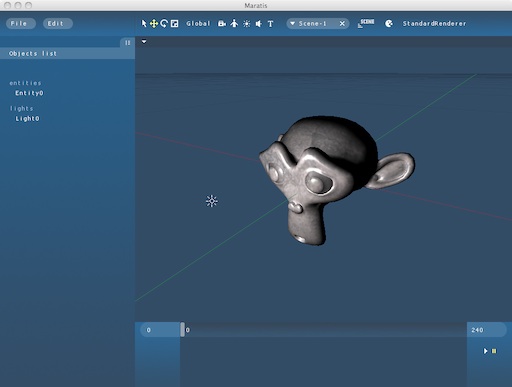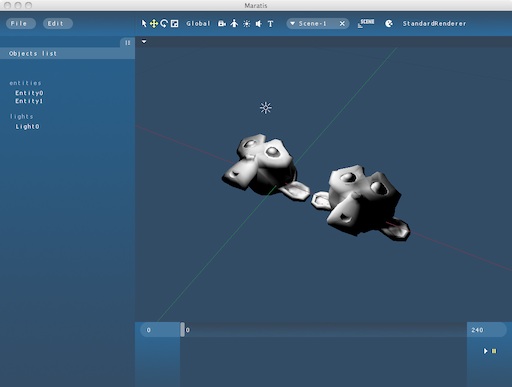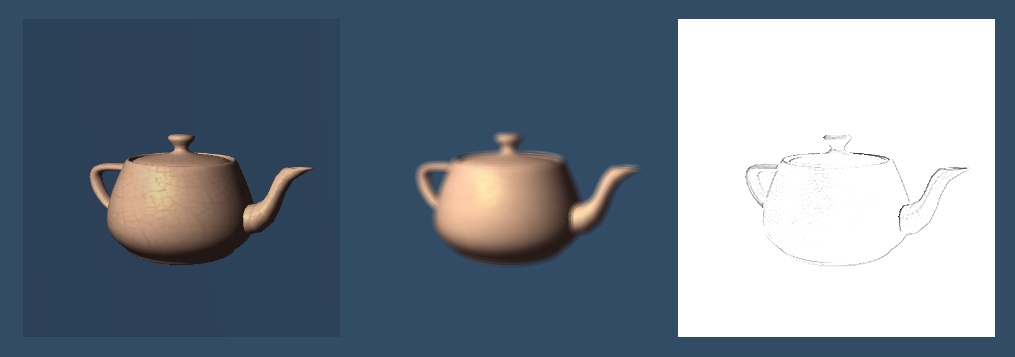is it the smoothing that is not the same or is it just too dark ?
the radius of the lamp in maratis is not too small ?
you can also play with the diffuse color and the emit color in blender.
You are not logged in. Please login or register.
Maratis forum » Posts by anael
is it the smoothing that is not the same or is it just too dark ?
the radius of the lamp in maratis is not too small ?
you can also play with the diffuse color and the emit color in blender.
Yes it needs uv coordinates, but you can generate uv coordinates with the cube projection the result will be the same.
The good thing with the mesh format is that it can be read easily using a text or a xml editor, your method is correct.
Hi,
did you follow the steps from the tutorial ? http://www.maratis3d.org/?p=277
Is your texture already in your project/maps/ directory and is it a jpeg or a png ?
yes, but it's in fact a bit limited, for blend files assimp doesn't support animation yet,
so it's always better to use the exporter. But if it evolves it can be interesting to import a full scene with lights and cameras.
With materials and textures :

here reading from a blend file
yes, maybe it should be added by default,
originally it was disabled to avoid problem with apple submission for iOS.
Nice ! you learn fast !
I'm starting working on a solution to load more 3d formats, like collada or obj
and thanks to Assimp (Open Asset Import Library) it should be faster than I taught !
Assimp can read a (really) large variety of 3d formats : http://assimp.sourceforge.net/main_feat … rmats.html
Some are more or less suitable, but the nice thing is from Maratis side there is only one reader to code in c++.
The import will be only used by Maratis editor, all the files will be automatically converted to Maratis binary mesh during the publishing, so the engine will stay as light as before.
After 3 hours of work, the reading of static (untextured) mesh is working :

(left is a obj file, right a collada file)
Still work to do but thank you Assimp.
It's not bad but it can be non optimal if the behavior is complex, lua is a dynamic langage and is not compiled in native code like c++.
Generally, a scripting langage is used for the general logic and complex behaviors like AI are done in c++,
but it's a balance to find depending on the project and the platform. Lua is still quite fast.
A complex script will run more or less 10 times slower than the same in c++ (depend of the complexity).
weight maps, do you mean for skeleton skinning ? yes, there is no limitation, but it's better to keep under 3 bones / vertex.
yes, the mesh in blender is in fact just a quad, you can make it one time and reuse it,
or take the one from the example with the t-pot.
With a plugin you can do it directly with code, there is a direct access to the engine so it can do anything.
I'll try to do something more simple in-editor for the next release if I have time.
It's in Blender : http://www.maratis3d.org/?p=277
There is a material mode called "CustomShader"
Bloom is already possible using the render to texture technique, it just need a shader, but should not be very complicated, you can look at the shaders of the example from the link I gave you, Bloom can be done a bit like the blur effect but with a contrasted image put in addition of the normal render.
Normally it has to be done using a c++ plugin,
but I recently added a feature that can enable render to texture from lua, and the texture can be used to do post process with a shader. Only thing is this method don't give access to depth yet so depth of field will still need to be done in c++ (I think I'll add it for the next version).
"Render to texture" example here : http://www.maratis3d.org/?page_id=53

3ds is not the best exchange format, is RealityFactoryPro exporting .obj files or some other format ?
It's like a 3d line, it starts from the start position and goes till end position.
In this exemple it goes from xyz(0, 0, 0) to xyz(100, 0, 0).
If you want to use it to detect a weapon shot, you set start as the tip of the gun and end as the maximum point the bullet can go.
The return point will be what you touched.
I think I'll make a real example soon.
it's probably because of face culling, it should be forced off for text yes.
found it, it's corrected on svn code : )
thanks, I'll correct this
Hi,
you can use dofile("myfile.lua") on top of your script
send me an exemple as simple as possible and explain what behavior you expect.
but yes, for something like that, the best will be to use a metatable (that I'm just starting to understand).
Do you mean only one clone at a time should play an animation ? even if both are in collision ?
If yes, you can stop the test when you find the first collision :
for clone in cloneList do
if isCollisionBetween(clone, collisionMesh) then
changeAnimation(clone, x)
break -- break exit the for loop
end
endVegas : normally it was already done (I probably forgot to add it to the wiki) :
setAnimationSpeed(object, speed)
getAnimationSpeed(object)
setCurrentFrame(object, frame)
getCurrentFrame(object)
Cool, thank you for the links.
The last screenshot seems interesting but too dark no ?
yes, for a 2d interface the best is to use a camera with "ortho" mode enabled and oriented toward Z.
Maratis forum » Posts by anael
Powered by PunBB, supported by Informer Technologies, Inc.
Currently installed 3 official extensions. Copyright © 2003–2009 PunBB.